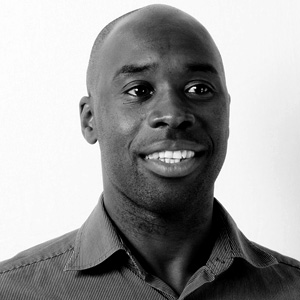If we can address the content challenges that exist within brands, what opportunities can organisations capitalise on now to deliver personalised experiences? We asked that question to a mix of agencies, brands and partners that attended a WPP European Summit back in June 2015. Here’s what our summit delegates prioritised as the three key areas for serious consideration by the business. In this post, we’ve pulled them together into a draft content engine blueprint:
- Show tangible business value and success. Understanding what content exists within the enterprise. Continually show its value, impact, and return back into the business. What if they was a workable content performance framework that continuously linked and tracked the investment case for content as a practical and pragmatic set of KPIs and objectives that quantified success? Imagine that.
- Manage content as a product. Move beyond episodic campaigns and projects. Focus on assembling brand communications, using blocks of reusable content that’s accessible across the enterprise. What if content architecture applied end-to-end product management principles to the design of strategic content, from ideation to expiration, based upon transparent and agreed investment cases? Imagine that.
- Content lifecycle management. There needs to be clear separation between content products and the services people use to operate them. What if the content operating model surfaced the processes and overarching governance framework for getting content into and out of the enterprise to drive real-time personalised experiences? Imagine that.
Forrester predicts that the volume of unstructured enterprise content is growing at a rate of 200% annually. Content is communication. How well it is designed, managed and measured directly impacts on our ability to engage effectively with customers. The content engine looks to address our content challenges and turn them into opportunities by consciously stepping up to manage content as an enterprise-level strategic asset that drives competitive advantage.
Read the rest of this entry »
What content challenges prevent you from engaging in broader and deeper customer relationships? Broader with more channels and deeper through personalisation. It’s 2017 and we continue to fight the good fight to deliver the most basic personalised experiences within a responsive web channel. Why is that?
Because it’s hard. It’s not easy to create, manage and deliver content in a predictable, repeatable and scalable manner. However, that’s precisely what we have to do for omni-channel personalised experiences. So what if we designed a content engine to do just that? What might that look like? In this three-part blog post series we explore just that. Starting with the challenges in this post, we move onto a blueprint for a content engine and before operationalising it in the final post.
Read the rest of this entry »
We are living in a digital world. Every organisation is going through a digital transformation today to stay relevant and be competitive. The smartest organisations are not going it alone. They enlist help to fill expertise gaps and bring in experience to accelerate them on their digital transformation journey. This help comes in the form of agencies and consultancies that have ‘done it before‘. However, are digital transformation partners themselves transforming?
It is not the strongest of the most intelligent who will survive but those who can best manage change – Charles Darwin
Late last year I a ttended a digital marketing event where a major global brand in the financial sector asked the agencies in the audience, are YOU transforming too? The presenter went on and listed a few things they look for from an agency to help them. We’ll get back to those. But first, his organisation clearly manages a large ecosystem of agencies and consultancies. With everyone one of them offering up experience and expertise to do better in a digital world. How can he differentiate between them?
ttended a digital marketing event where a major global brand in the financial sector asked the agencies in the audience, are YOU transforming too? The presenter went on and listed a few things they look for from an agency to help them. We’ll get back to those. But first, his organisation clearly manages a large ecosystem of agencies and consultancies. With everyone one of them offering up experience and expertise to do better in a digital world. How can he differentiate between them?
Read the rest of this entry »
In today’s experience economy, becoming customer centric is a necessary and well acknowledged transformative organisational challenge. Let’s break that down. We see the customer as the consumer and the organisation as the enterprise. Over the last few years the focus has largely been on delivering superior consumer experiences. However, we should also recognise that great enterprise experiences result in better consumer experiences. With the current thinking splitting corporate investments 80/20 in favour of consumer experience over enterprise experience, are we missing a trick here?
Enterprise Experience
Consumer experience is the sum of all interactions we have with a brand throughout the consumer lifecycle. If done right, we advocate for the brand and want to further engage with them. The enterprise experience is exactly the same but targets audiences inside the organisation rather than outside. These internal audiences – agencies, partners, IT, executives, vendors, business units – follow processes and use technology to create those superior consumer experiences. The organisational challenge is about empowering these internal audiences with modern tools and techniques that have come to rely on as consumers.

If this is what enterprise experience is about, why are organisations falling short of the mark?
Read the rest of this entry »
 Last week was the first time I was stateside to witness firsthand a US Presidential Election. Thankfully, this is not a political post. Instead, I was there to join a gathering of technologists, musicians, entrepreneurs, writers, athletes, DJs, and so on heading out for the final Summit at Sea in Miami.
Last week was the first time I was stateside to witness firsthand a US Presidential Election. Thankfully, this is not a political post. Instead, I was there to join a gathering of technologists, musicians, entrepreneurs, writers, athletes, DJs, and so on heading out for the final Summit at Sea in Miami.
Nearly 3000 of us left Miami and headed out to the Bahamas for 3 days on the cruise ship Norwegian Escape. The Summit at Sea sessions ranged from politics to economics, technology to music, film to health, and so on. The talks were given by industry leaders in their fields of expertise (e.g. Will.ia.m, Quentin Tarantino, Erin Brochwich, Eric Schmidt, Carl Bernstein) and by seriously progressive thinkers. The biggest takeaway from Summit, and it was rammed home by everyone, was that you got the power. Ideas abound. But to execute, well, that’s on you.
Read the rest of this entry »
 We like outcomes. They tend to be simple things that we can wrap our heads around. I need to be more focused. I want to lose weight. I should listen more. Focus. Weight Loss. Listen. All outcomes. But are they a “realistic” outcome? Not quite.
We like outcomes. They tend to be simple things that we can wrap our heads around. I need to be more focused. I want to lose weight. I should listen more. Focus. Weight Loss. Listen. All outcomes. But are they a “realistic” outcome? Not quite.
A realistic outcome needs an approach.
The approach details precisely how you’re going to assure that outcome will happen. How exactly are you going to be more focused? Are you going to do less? Focus on one thing at a time? Bring in more help? Proactively prioritise? Do more planning? Or a maybe a combination of some or all of these things. A realistic outcome requires you to be clear on the approach as well.
When outcomes are business outcomes, the approach part of the equation is even more critical. The business never prefixes outcome with realistic. Instead, they just expect every outcome to be realistic. So, bake in your approach.
Read the rest of this entry »
 It’s been fun few years, but my content modelling blog post series has come to an end. I started it to amplify what others were saying about structured content, and to make it accessible. When I started, there was gap: everyone knew structured content was important but there weren’t many places to go to show you how to approach it.
It’s been fun few years, but my content modelling blog post series has come to an end. I started it to amplify what others were saying about structured content, and to make it accessible. When I started, there was gap: everyone knew structured content was important but there weren’t many places to go to show you how to approach it.
Content modelling is important. It’s about designing content together, as part of a cross-disciplinary team. Not from the tech up, or from the business down, but as a joined-up, sustainable team across the organisation.
A content model is a communication vehicle. Content modelling is the process to facilitate that communication. Value content modelling over the content model.
As I close out this series, I want to review where we’ve been, what we’ve learned and start to think about what comes next.
Read the rest of this entry »
A couple months ago I met Lujza. She’s into video. Big time.
We all know video is important. Some already citing video as the most important type of content for truly engaging with consumers. But what steps can we take to really understand how effective video is at doing that. Well, that’s where Lujza’s story is really interesting. Over to you.
Lujza Bubanova, Co-founder of YouFirst & Divano

Lujza Bubanova of Divano and YouFirst – Video
Hi! Before co-founding Divano I was a professional golfer. I got into media tech while studying for a Masters of Digital Marketing at Hult International Business School in San Francisco. As a student, I started a conference called Startupism. That led to me securing a spot at the Stanford Persuasive Technology Labs as an intern studying behavioural patterns and then media consumption of contemporary viewers. So what did I find?
We can gauge the ability of viewers to consume two sources of entertainment at a time and at the same quality level as if consumed from just one source. Think TV and mobile. Not only can be do both but the sum of the two parts is drives superior engagement. This finding now serves as the fundamental hypothesis for Divano’s value creation model during ad breaks (more on Divano later).
I’m also tapping into the new area of emotion metrics focusing on youtubers and Mulit-Channel Networks (MCNs) allowing them to pre-test content before release. With YouFirst, you can do what the big movie/tv productions having been doing for years but a fraction of the cost using technology.
Read the rest of this entry »
Joe Pulizzi and Robert Rose of the Content Marketing Institute always make me think. This week their thought-provoking notes overlapped with something that has been niggling at me for some time now: future planning.
I’m a firm believer that the most successful leaders continually plan for tomorrow. However, they must equally deliver value and realise benefits as they go. To keep the dream alive, and keep people going. This is really hard. How do you create a plan that has a beginning, middle and an end? Cue some solutions from NASA.
Read the rest of this entry »
Last week I had the good fortune to attend an unconference session run by Chris Satchell. He’s ex-CTO of Nike. He understands customers. Now as Chief Product Officer over at Comcast, he led with this thought provoking one-liner:
Your brand is your customer journey.
Think about that for moment.
We’ve all heard that your brand is not what you say it is but how others perceive it. Brand perception boils down to how your customers engage with you. The journeys you take them on. It’s the sum total of all customer experiences – for better, for worse – across all touchpoints. Your brand is your customer journey, but they must been connected.

The challenge lies in mapping out these interconnected customer journeys. They are hard to create in the first place and really difficult to sustain ongoing success. Continuously changing over time, connected customer journeys require so many people across the business to collaborate. But that is exactly what success looks like for those companies building superior brands. The ability to design and deliver connected customer journeys is a critical component of competitive advantage in digital today. No longer an optional, connected customer journeys are the new norm.
Read the rest of this entry »




 It’s been fun few years, but my content modelling blog post series has come to an end. I started it to amplify what others were saying about structured content, and to make it accessible. When I started, there was gap: everyone knew structured content was important but there weren’t many places to go to show you how to approach it.
It’s been fun few years, but my content modelling blog post series has come to an end. I started it to amplify what others were saying about structured content, and to make it accessible. When I started, there was gap: everyone knew structured content was important but there weren’t many places to go to show you how to approach it.

